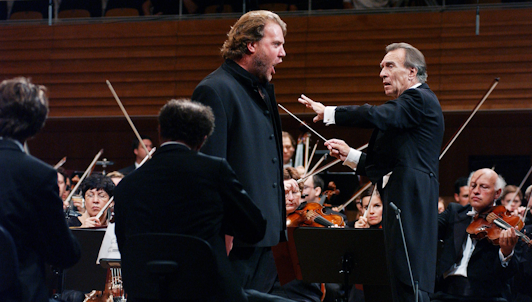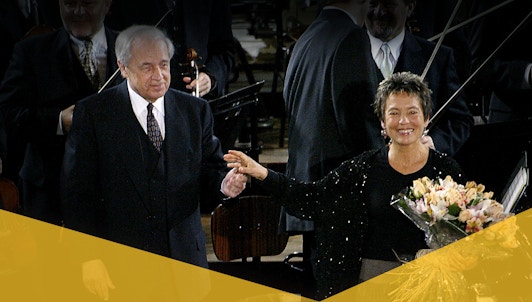A titan. That is the first word that comes to mind when thinking of the pianist Emil Gilels. Not only because of his imposing physical presence, but also for the very special way his hands take possession of the keyboard and draw from it, like from a bow, powerful full-bodied sounds.
Born in 1916 in Odessa, like David Oistrakh, he studied the piano at the music school of his native town before becoming the pupil, at the Moscow Conservatory, of the famous professor Heinrich Neuhaus, at the same time as a certain Sviatoslav Richter… In the Gilels family, everyone plays music. his sister Elisabeth married the violinist Leonid Kogan and his daughter Elena also later became a pianist. With his brother-in-law Leonid Kogan and Rostropovich, he forms a famous trio which is joined when necessary by the viola player, Rudolf Barshai. In Odessa, he meets Prokofiev who becomes a very close friend and entrusts him with the premiere of his Eighth Piano Sonata.
In 1959, in Paris, under the direction of André Cluytens, Emil Gilels attacks the first notes of Tchaikovsky's Piano Concerto No. 1 as a lion would attack his prey. But the claw leaves no wounds: it has a velvet touch! Enthralled, the public applauds as soon as they hear the cadenza of the first movement.
It is Stanislav Neuhaus, the pianist and teacher at the Moscow Conservatory who followed in his father Heinrich's footsteps, whom we meet several years later, in 1966, in Paris. Born in Moscow in 1927, Stanislav spends a good deal of his time during his childhood and adolescence in the company of his father-in-law, the writer Boris Pasternak.
A magnificent virtuoso, he masters the most tortuous pieces, such as the Etude in C sharp Minor and the Nocturne for the left hand by Scriabin, while displaying his usual subtlety and elegance. From among Debussy's works he gives the most spectacular rendition imaginable of the Fireworks and a delightfully grating Minstrels.
Archives
- "Concert de l'Orchestre National de la RTF," INA archive by Marcel Bluwal, 1959.
- -"Musique pour vous," INA archive by André Leroux, 1966.

